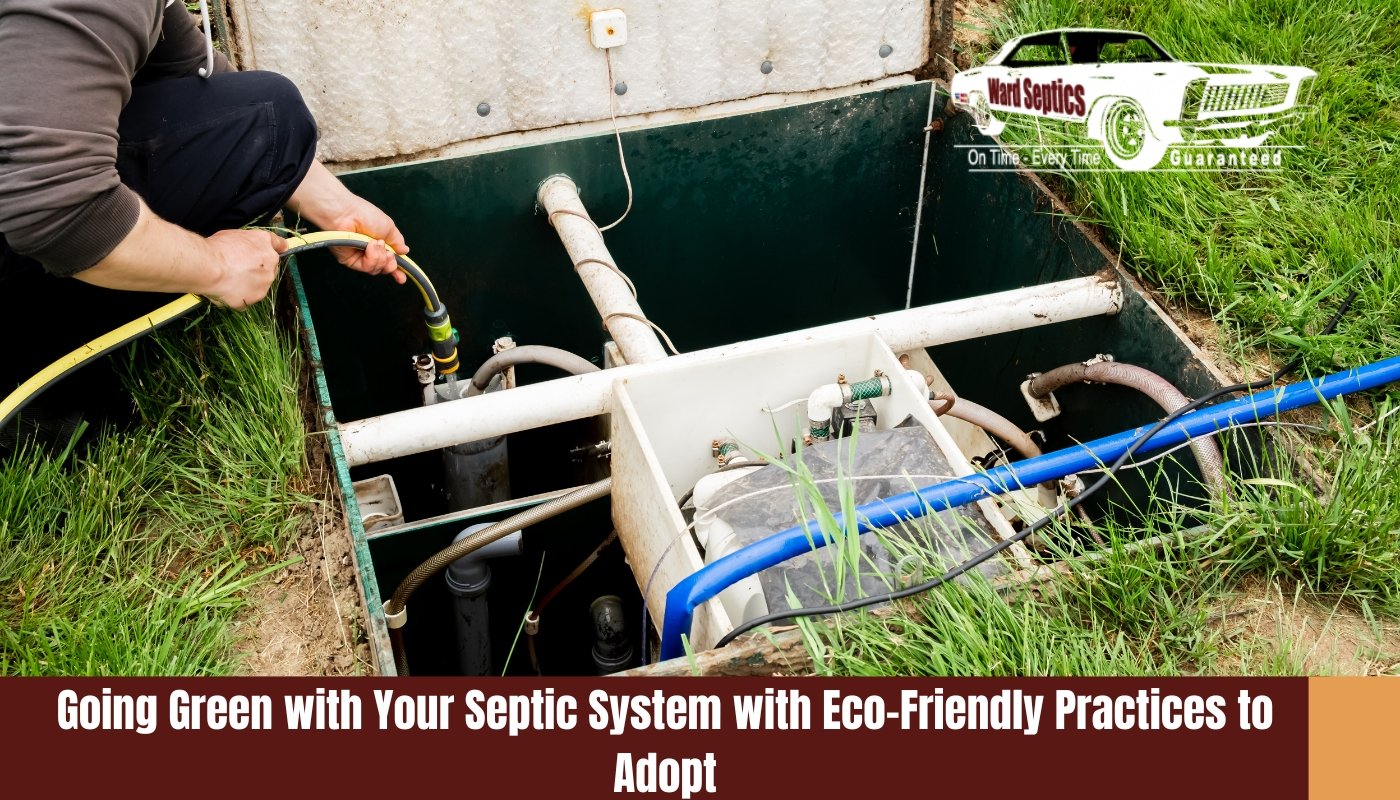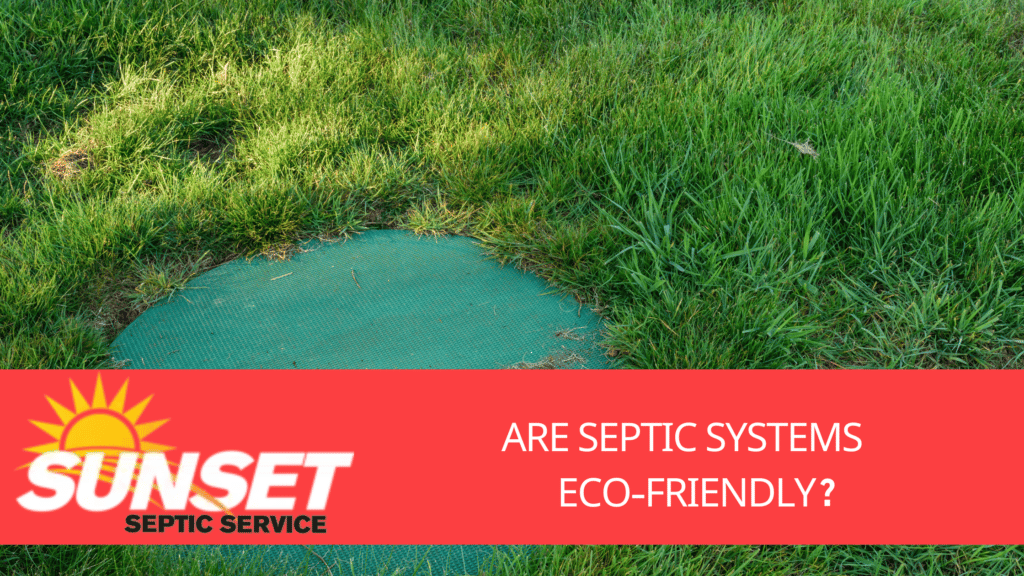In “The Green Virtues of Eco-Friendly Septic Systems,” you dive into the world of sustainable living right from your own backyard. This article unveils the numerous benefits of incorporating eco-friendly septic systems into your home, highlighting not only the environmental advantages but also the long-term cost savings.
As you read on, you’ll discover how these innovative systems promote water conservation, reduce pollution, and support a healthier ecosystem. By shifting to an eco-friendly septic system, you’re making a conscious choice to protect the planet while enhancing your home’s functionality.
Have you ever stopped to ponder the ecological footprint of your septic system? Ah, the wonders of modern sanitation! For most of us, the idea of delving into the nitty-gritty details of septic systems may not seem as thrilling as, say, debating the merits of a fine wine or immersing oneself in a novel.
However, when it comes to eco-friendly septic systems, you might be pleasantly surprised—intrigued, even—by how these unsung heroes can positively impact our environment.
The Green Virtues of Eco-Friendly Septic Systems
Eco-friendly septic systems, indeed, hold many virtues. The more you learn, the more you might find yourself enchanted by their environmentally sustainable mechanisms and the benefits they bring to our planet. Allow me to guide you through this labyrinth of information with the grace and wit befitting such a noble endeavor.
Understanding Traditional Septic Systems
Firstly, let’s delve just a bit into conventional systems. Why? Because contrast, dear reader, often enhances appreciation.
Traditional septic systems rely on a tank and a drain field to manage household wastewater. While functional, these systems often fall short when scrutinized under the lens of environmental sustainability. To elucidate:
| Component | Traditional Function | Environmental Impact |
|---|---|---|
| Septic Tank | Holds Wastewater | Potential Leakage, Non-sustainable |
| Drain Field | Filters Water | Soil Contamination, High Land Use |
| Pump | Moves Waste | Requires Energy, Carbon Footprint |
Imagine, if you will, a world where the humble tank does more than just partition waste—it contributes to the ecosystem’s health. Is that not an inspiring vision? Indeed, modern advancements in septic systems have made this dream almost poetic.
The Essence of Eco-Friendly Septic Systems
Eco-friendly or “green” septic systems transcend the limitations of their traditional counterparts. These systems employ innovative methods to treat wastewater more sustainably. Think of them as the Leonardo da Vincis of waste management—imaginative, ahead of their time, and virtuously green.

Benefits to the Environment
A question worth exploring: Why do eco-friendly septic systems matter so profoundly? The answer lies in their manifold benefits to the environment. These benefits shall now be unveiled like the layers of an exquisitely wrapped gift.
Reduction in Contaminants
Standard systems are often inefficient at filtering out harmful contaminants. Eco-friendly systems, on the other hand, make use of advanced filtration processes to reduce pollutants substantially. Consider this simple comparison:
| Factor | Traditional Septic System | Eco-friendly Septic System |
|---|---|---|
| Nitrogen Levels | Moderate to High | Low to Minimal |
| Pathogens | Possible Presence | Reduced/Eliminated |
| Chemical Waste | Often Present | Minimal to None |
By lessening these contaminants, eco-friendly systems ensure that groundwater and nearby bodies of water remain clean—quite a vital consideration for avid nature lovers and even those who prefer their drinking water sans chemical aftertaste.
Energy Efficiency
Oh, to talk of energy efficiency! Traditional systems often require significant electricity, especially if pumps are involved. Eco-friendly systems, however, often leverage the laws of nature to do the heavy lifting. These systems might harness gravity or use solar power, leading to:
- Reduced electricity use
- Lower carbon emissions
- Financial savings over time
Types of Eco-Friendly Septic Systems
Now, let’s visit the buffet of choices available to the discerning environmentalist. Each type of eco-friendly septic system offers unique advantages, akin to selecting a fine wine to accompany a sumptuous dinner.
Constructed Wetlands
Constructed wetlands mimic the natural process of wetlands to treat wastewater. Picture this: Macrophytes—marsh plants, if you will—thrive in a bed of gravel, filtering out contaminants as the water trickles through.
Pros:
- Aesthetic appeal (Think of it as garden art!)
- High efficiency in contaminant removal
- Minimal energy use
Cons:
- Requires a fair amount of land
- Initial setup can be costly
Aerobic Treatment Units (ATUs)
Aerobic systems add oxygen to the treatment process, facilitating the breakdown of organic matter. Much like how a fine aerobics class rejuvenates the body, these systems invigorate the wastewater treatment process.
Pros:
- Efficient in breaking down organic matter
- Suitable for small lots
- Lower nitrogen levels in effluent
Cons:
- Requires electricity for the aeration process
- Regular maintenance needed
Drip Distribution Systems
Drip distribution systems involve distributing treated wastewater into the soil via an intricate maze of tiny pipes. Envision, if you will, a masterful irrigation system not for crops, but for responsibly dispersing cleansed water.
Pros:
- Efficient water usage
- Excellent for areas with diverse topography
- Reduces risk of soil saturation
Cons:
- Can be complex to install
- Maintenance involves intricate tasks

Maintenance: The Art of Sustaining Efficacy
Even the most enlightened eco-friendly system requires diligent care. Think of it as a splendid garden—regular tending ensures it remains bountiful and healthy. Herein lies the maintenance guide:
Routine Inspections
Much like seasonal festivals that bring communities together, regular inspections can highlight issues before they escalate. Engage a professional to inspect:
- Water levels
- Contaminant levels
- Component functionality
Proper Usage
Even the most innovative system depends on its user. Avoid flushing non-biodegradable items or excessive chemicals down the drain. Envision your septic system as a benevolent but delicate ecosystem.
| Don’t Flush | Flush-Friendly |
|---|---|
| Plastic Items | Toilet Paper |
| Harsh Chemicals | Biodegradable Cleaners |
| Non-biodegradable Wipes | Organic Waste (In Moderation) |
Integration with Sustainable Living
An eco-friendly septic system doesn’t stand in isolation; it complements a broader lifestyle devoted to sustainability. Imagine your home as a sanctuary where each element, from energy usage to waste disposal, harmonizes in a symphony of green virtues.
Rainwater Harvesting
Consider integrating your septic system with rainwater harvesting efforts. Utilize captured rainwater to manage landscaping, thereby lessening the load on your septic system. It’s as if you’ve invited a symphonic crescendo into your eco-ensemble.
Greywater Recycling
Recycling greywater—water from showers, sinks, and washing machines—provides further complementarity. Greywater systems can divert lightly used water for irrigation or even in conjunction with eco-friendly septic systems.

The Future: Innovations on the Horizon
The quest for greener living, much like the pursuits of Renaissance legends, continues to evolve. Here’s a glimpse of tantalizing innovations on the horizon:
Nano-filtration Technologies
Imagine a filtration system utilizing nanoparticles to cleanse water with surgical precision. These advanced filters promise to reduce even the most micronic of contaminants, ensuring the purest of effluent.
Solar-Powered Systems
Picture a septic system entirely powered by the sun—a radiant testament to human ingenuity. By harnessing solar energy, such systems drastically cut down on conventional energy use.
Challenges and Obstacles
Of course, every rose has its thorns, as do even the most virtuous of eco-friendly septic systems. They are not without their challenges, and understanding these can prepare you for a smoother eco-journey.
Initial Costs
The initial setup costs for eco-friendly systems can be prohibitive. However, one may view this as an investment in both environmental sustainability and long-term financial savings.
Land Requirements
In some cases, more land is required to facilitate systems like constructed wetlands. This might pose an issue for urban or densely populated areas. However, creative solutions can prevail, such as vertical garden-inspired systems.
Regulatory Conundrums
Different regions may impose varying regulations, sometimes complicating installation or approval processes. But like any worthwhile quest, persistence and patience often navigate these bureaucratic labyrinths.

Final Thoughts: Embracing the Virtue of Green Living
As we’ve meandered through this rich tapestry of eco-friendly septic systems, it’s clear that adopting such systems contributes to a sustainable lifestyle. Indubitably, the choice to go green resonates far beyond wastewater treatment—it harmonizes with a broader symphony of eco-conscious living.
May you find inspiration and perhaps even a newfound passion for these green virtues. In a world where our environmental footprint grows ever more critical, the adoption of eco-friendly septic systems represents not just a method of waste management, but a testament to responsible stewardship of our precious planet.
Now, dear reader, go forth and spread the green virtues of eco-friendly septic systems. Let us turn waste into wonder, and in doing so, usher in an era of sustainable living with the grandeur it so richly deserves.

